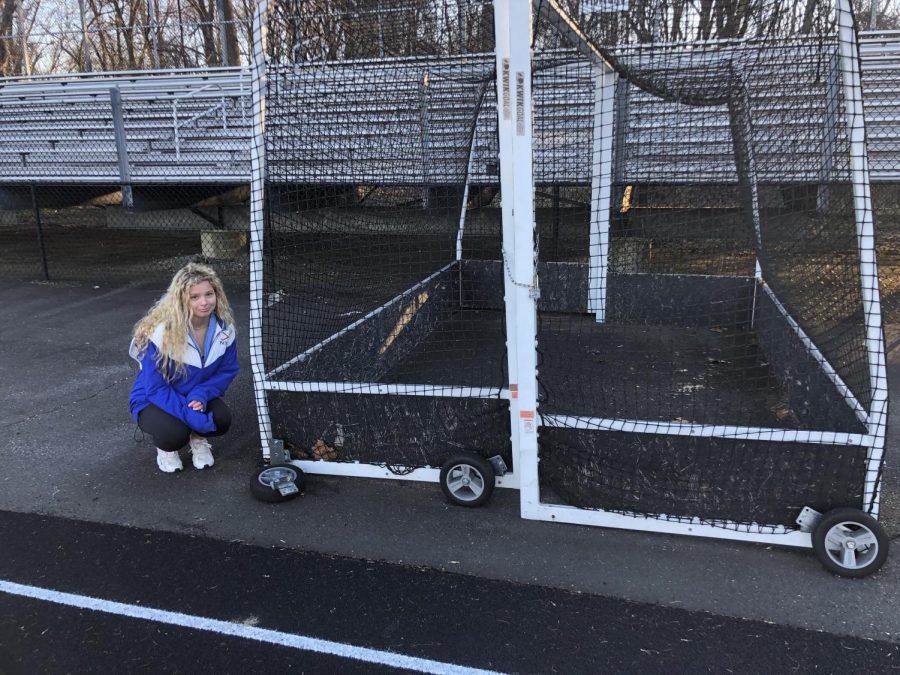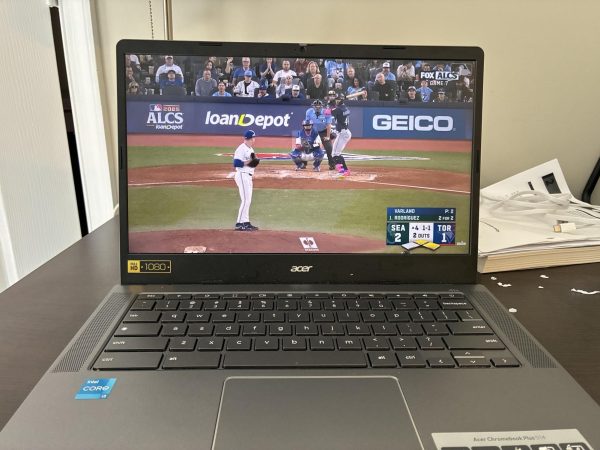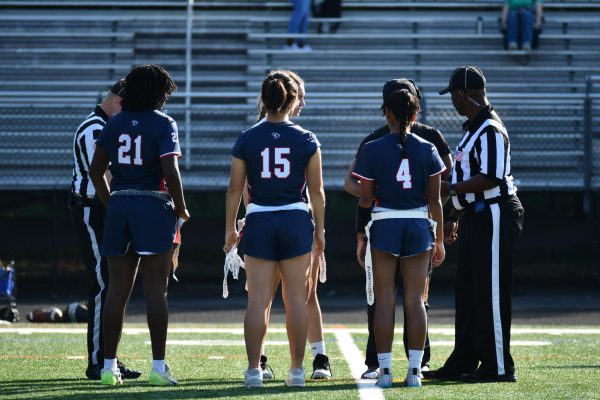Wheelless field hockey goal threatens danger for athletes
Gillian Berman prepares to carry a field hockey goal with a broken wheel.
Three athletes struggle to transport the field hockey goals to opposite sides of the field. The girls wobble as they attempt to lug the 218 pound mass over 50 yards. Suddenly, the towering goal begins to tip, crashing down on Captain Ellie Metz. The lack of wheels on the field hockey goals allows for dangerous situations like this to occur day after day.
The field hockey team possesses two goals, one which is properly equipped with all four wheels, and another, which only bears a single wheel. Since the field hockey goals weigh 218 pounds, they require all four wheels to be pushed across the field and stationed in their appropriate positions. However, over the years, three out of the four wheels on one of the goals have broken. Therefore, the only way to be transported at the start and end of every practice is for the athletes to lift the extremely heavy goal and carry it by hand.
Lifting these goals was an enormous waste of time for the team. Every day before practice, up to 10 girls would spend anywhere from five to 15 minutes attempting to carry goals down the field. If the goals were furnished with the proper equipment, this task would only take two to three minutes. “It absolutely wasted our time because it took a lot of effort to move the goals from the back all the way to the other side of the field. We also had to make sure that our hands and feet weren’t getting in the way to prevent injury, which made it take even longer,” junior Maya Chelar said.
In addition to being tedious, the act of carrying the goals multiple times every practice is extremely dangerous. With their large weight, the goals could seriously injure a player if it fell on top of them. “Carrying the goals could be super dangerous because if the weight was not disputed evenly then it could tip over when we were carrying it. Putting it down was also very tricky because it’s easy to get your fingers caught under the extremely heavy goal if you are not careful. Half of the teammates carrying the goals would be walking backwards as they help transport the goal, which was also risky,” sophomore Sydney Kauff said.
Metz had a near-injury experience during practice. Along with a couple other teammates, Metz offered to help transport the goal one day before practice. The weight was too much for the girls, and one wrong step caused the goal to come crashing down on top Metz. “Luckily I landed underneath the netted section. However, we should invest in wheels because even though I wasn’t hurt, this situation could very likely happen again and someone could get seriously injured,” Metz said.
A new set of wheels costs around $500. While that might seem like a sizable amount, the price could be acquired by just a $10 donation from every family on the varsity and junior varsity field hockey teams. “There are many simple ways to fundraise money for this cause. We could have a restaurant fundraiser, host a field day to teach K-eighth graders how to play field hockey or even just have each member of the team chip in a few bucks,” Kauff said.
Your donation will support the student journalists of Thomas S. Wootton High School. Your contribution will allow us to purchase equipment and cover our annual website hosting costs.
Mandy is a 2023 graduate.







